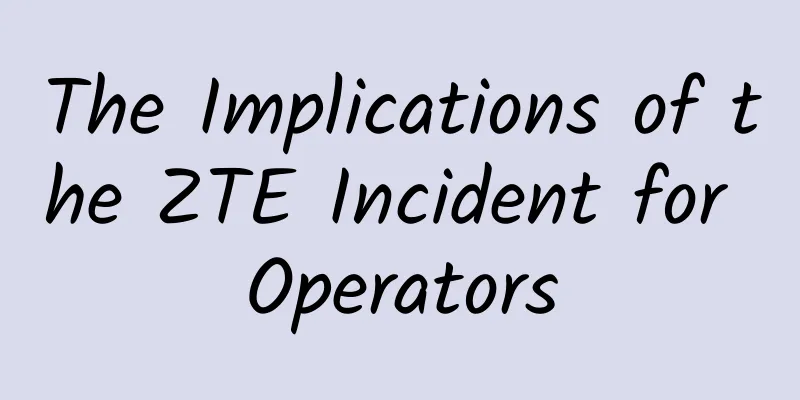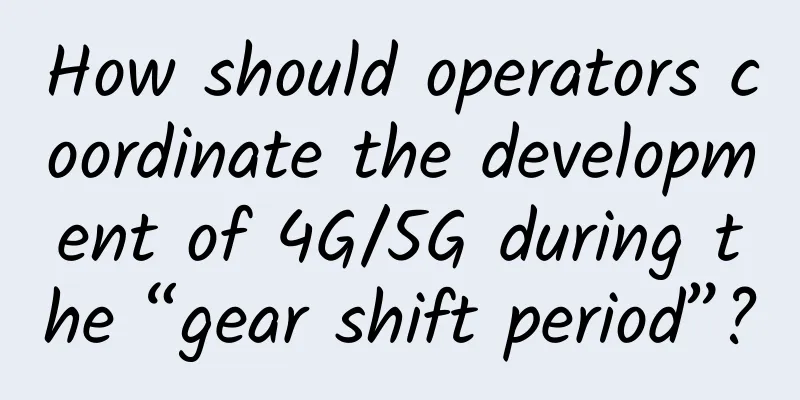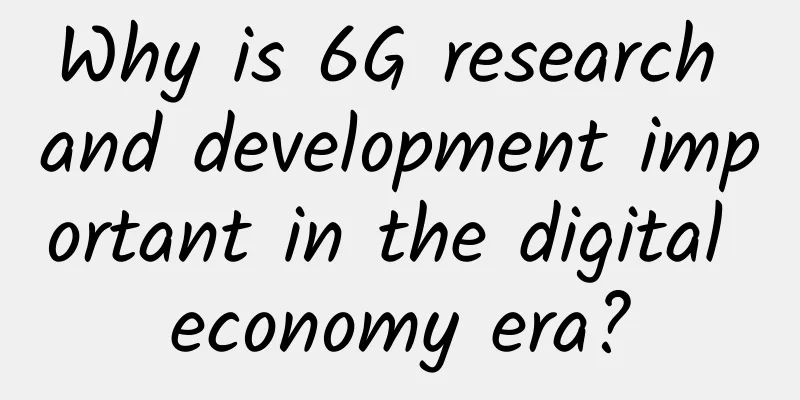The Implications of the ZTE Incident for Operators

|
Although the ZTE incident has not yet reached a final conclusion, there are already optimistic news on the Internet, such as "The US Department of Commerce allows ZTE to supplement its materials" and "US negotiators in China said they would report the ZTE incident to Trump". Let's not discuss the future direction and final outcome of the ZTE incident for now. In addition to sounding the alarm for equipment vendors in the communications industry, this incident should also wake up operators. Because any company that cannot be independent at key business points may face the risk and pressure of being "choked" at any time. Now ZTE is under such pressure, and the risk of operators being "choked" is also increasing.
1. The single “forward charging” model may have a “stuck neck” for operators Because of the chip "choke", there are even rumors on the Internet that ZTE is going to go bankrupt. Although the operators have not yet been significantly restricted by the "choke", the real bottleneck of the industry has become increasingly obvious. This is due to the strong "price limit" of the regulatory layer, the dependence on monopoly due to licenses, and of course, more of the factors of the industry's own business shortage. The traditional business model of operators is to charge users. We don't need to look at the performance of past years. The situation in the first quarter of this year alone has already shown the operating difficulties faced by operators as a whole. From the perspective of the communications industry, more than doubled business growth has been exchanged for less than ten percentage points of revenue growth, and this volume-revenue gap will continue in the future; from the perspective of the communications Internet industry as a whole, the revenue and profits of operators have been left behind by Internet companies by several streets. In the post-4G era before the arrival of 5G, the competition faced by operators has escalated into a hand-to-hand fight. After losing the demographic dividend and policy dividends one after another, the existing forward charging model faces many restrictions under the big video + large traffic + unlimited, and the repeated price cuts have made it increasingly difficult for users to pay for communication fees. Operators should learn from the "agricultural fee to tax" at the national level, and eventually cancel the agricultural tax model, and change the "forward charging" model of collecting taxes directly from farmers to "backward charging" of various consumption taxes. Backward charging has actually become an urgent need for operators to transform. We can also understand that various industry restrictions, including speed increase and fee reduction at the regulatory level, and industry value-added services, are all designed for forward charging. If there is no breakthrough in the revenue model, the chances of operators turning over will become smaller and smaller. 2. Online channel vendors are too concentrated, and it is difficult to break through Although the Internet is a very open space, domestic Internet applications have been increasingly concentrated, either BATJ or belonging to the BATJ series. Although operators have the closest Internet entrance, their voice online is very limited. The reason why China Unicom's various Wang Cards and Bao Cards can gather more than 100 million users in a short period of time is that the support of BATJ is the best channel resource and the key to successful customer acquisition. Everyone should still remember that at the end of last year, various Tencent applications were strongly implanted and promoted Wang Cards, and through online and offline linkages, they quickly attracted a large number of young users in a short period of time. In 2017, China Unicom got out of the past decline, which is inseparable from the content and online resource support of BATJ and others. Now the offline channel resources of operators are saturated. Relying on offline customer acquisition is not only costly but also inefficient. I believe everyone has recognized this problem. We dare not say that BATJ and other Internet giants have strangled the operators' necks in the transition to online, but at least the operators are already the weaker party. In addition to cooperating with BATJ, operators can of course cultivate their own online channels, but such a cultivation process is not only time-consuming and labor-intensive, but also not necessarily effective. The reason is that BATJ has already controlled the vast majority of applications in the consumer Internet field, and any channel with low relevance to life scenes will have a greatly reduced customer acquisition ability. Of course, this does not mean that operators have to sit back and wait for death, but that operators must see this situation clearly and seize the transformation. Take the simplest WeChat public account as an example. Have the number of fans and business carrying capacity of operators met the needs of market development? Everyone can easily experience and try it out and tell their feelings. At least my feeling is unsatisfactory, or too unsatisfactory. 3. IoT revenue is too low, and operators urgently need to expand into downstream industries If the 4G era made BATJ the top player in the consumer Internet field, then in the future 5G era, whoever seizes the vent of NB-IoT can more easily gain the leading position in the industrial Internet field. However, industry personnel who have conducted in-depth analysis and research on the Internet of Things know that the current Internet revenue is too low. The previous idea of relying on scale to make up for the lack of revenue has been falsified. On the one hand, there are soft power factors such as insufficient market awareness, and on the other hand, it is affected by the shortage of IoT terminal hardware. For the improvement of soft power, it takes time to solve this problem, and it also requires successful examples for experiential promotion. Therefore, the biggest problem now is that hardware limits the development and benefits of the Internet of Things. Operators should abandon the role positioning of focusing only on upstream connections when talking about the Internet of Things, and instead broaden the perspective of revenue to upstream and downstream linkages. In current IoT applications, the main funds go to users to purchase terminal hardware, and the value of the connection that truly belongs to operators is minimal. It is difficult to increase the marketization and popularity of high-priced terminal hardware, so the difficulty of promoting such IoT applications can be imagined. The initial investment is large, and the benefits will only appear in three to five years, which is already the biggest construction obstacle for demand companies. In IoT applications such as smart manhole covers and smart street lights, operators are still limited to providing channel cards. To promote the Internet on a large scale, operators need to carry out large-scale market cultivation, and the first thing to do is to cut off the high-price transmission starting from IoT terminal hardware. Operators can and should invest in downstream companies, on the one hand to strengthen the innovation and R&D capabilities of downstream companies to launch high-quality and low-priced hardware, and on the other hand to obtain part of the benefits from hardware to obtain the development results of the IoT. Even from the perspective of cultivating the development of the IoT industry and occupying a leading position in the industrial Internet, extending to the downstream of the industry is also a must-consider content. I believe that the ZTE incident has brought more enlightenment to those who support "Made in China 2025". Now various media reports are overwhelming. As an important member of the communications industry, operators should have no less experience and lessons to learn than other industries. In addition to the issues mentioned in this article, issues such as the impact of missing "content" and improper compliance and risk management should also become the focus of operators. |
>>: Five major events in global 5G communication technology and deployment in the past two weeks
Recommend
How cloud services enable a 5G-driven future
As high-speed cellular networks become mainstream...
WOT Cheng Chao: Alibaba's monitoring development path from automation to intelligence
[51CTO.com original article] On May 18-19, 2018, ...
How is vmiss? Simple test of vmiss Hong Kong VPS (CN-Hong Kong-BGP V2)
The blog has shared Vmiss discount information ma...
Baidu cloud carnival/price guarantee 11.11, cloud server as low as 46 yuan/year
This year's Double 11 event started very earl...
Learn the network protocol stack in ARM-uboot from scratch
[[401440]] Network protocol stack in uboot The ne...
For the first time, such a clear and unconventional explanation of K8S network
[51CTO.com original article] K8S network design a...
What does 5G bring to the Internet of Things today and tomorrow?
The Internet of Things is already booming, and we...
Do you know the differences between different versions of HTTP protocol?
[[420148]] Introduction There are already multipl...
Ministry of Industry and Information Technology: The number of 5G terminal connections this year has exceeded 200 million
Wen Ku, spokesman for the Ministry of Industry an...
Akamai Li Wentao: Starting from four major strategies, helping enterprises build a new paradigm for public cloud
In today's digital age, cloud computing has b...
Wireless power could be key to 5G-enabled sustainable smart cities
The Internet of Things (IoT) is estimated to curr...
5G brings precise positioning to the Internet of Things
Cellular has ‘all the ingredients’ to enhance pre...
Let's talk about TPC
[[403151]] In recent days, the PR publicity of Oc...
In order to "force" users to switch to 5G, operators have come up with new moves?
[[422740]] Recently, the voice of "forcing&q...
Will 5G eliminate Wi-Fi/4G? No, multi-access network integration is the way to go!
The advent of 5G brings not only new technologies...









